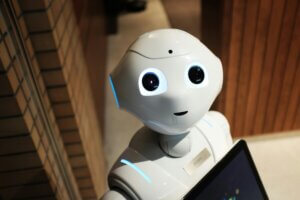
Although the initial investment in robotics and artificial intelligence systems is substantial, often costing hundreds of thousands of dollars per unit, restaurants are betting that these upfront costs will pay off through increased efficiency, reduced labor expenses and improved customer experiences over time.
As many establishments have struggled to find and retain workers since the Covid-19 pandemic, this emerging technology offers a potential solution to the current labor shortage challenge—allowing restaurants to maintain operations even with a smaller human workforce.
Robots like Sweetgreen’s Infinite Kitchen or White Castle’s Flippy 2 can work consistently without breaks, sick days or wage increases, potentially reducing labor costs. Additionally, these automated systems can often work faster and more precisely than humans, increasing productivity and consistency in food preparation. They also enable restaurants to extend operating hours without increasing labor costs.
However, if this trend continues, it could greatly impact the job market for front-line, low-wage positions in the food service industry that focus on repetitive tasks, like food preparation or order delivery.
The automation of these jobs could result in the loss of employment or a shift in the types of positions available in restaurants, with more emphasis on customer service, machine operation and maintenance roles that require human skills robots can’t easily replicate.
Robot Kitchens
“In five years, we do expect eventually all Sweetgreen stores to be automated,” said CEO Jonathan Neman at the William Blair Growth Stock Conference in June 2023.
The American, fast-casual restaurant chain that specializes in salads launched its inaugural automated eatery last year in Naperville, a suburb of Chicago, Illinois.
Sweetgreen told investors in a Q4 earnings call that trials of its Infinite Kitchen automated system, which reportedly is capable of producing 500 bowls per hour, showed enhancements in throughput, order accuracy and staff retention. Additionally, the average transaction value was more than 10% higher than in nearby markets.
According to Sweetgreen’s CFO Mitch Reback, implementing an Infinite Kitchen requires an additional investment of $450,000 to $500,000 per location, but it has the potential to boost restaurant margins by seven percentage points where the technology is deployed.
For context, the cost of this automated system is comparable to the annual starting salaries of about 14 full-time kitchen staff members at a Sweetgreen location in Washington, D.C., as reported by Restaurant Dive. This expenditure also equates to the wages of approximately 23 workers putting in average weekly hours for restaurant production staff, according to data from the U.S. Bureau of Labor Statistics.
Similarly, White Castle added Flippy, a robotic fry cook, to its kitchen operations in September 2020, which has since been upgraded to Flippy 2. The world’s first fast-food hamburger chain reportedly plans to implement the robotic device in one third of its locations across the U.S.
Its responsibilities involve loading the fry baskets, submerging them in hot frying oil and subsequently transferring the cooked fries to a holding area. Flippy 2’s output is 30% greater, achieving approximately 60 baskets per hour, compared to its human equivalent.
“Flippy 2 alleviates the pain points that come with back-of-house roles at quick-service restaurants to create a working environment for its human co-workers that maximizes the efficiency of the kitchen,” Miso Robotics, the creator of Flippy and other robotic systems designed for the restaurant industry, said in a statement. “The improved workflow allows for the redeployment of team members to focus on creating memorable moments for customers.”
The Need For Humans
The integration of robots in kitchen operations does not mean a complete elimination of human jobs. Many restaurants are using automation to complement its existing staff rather than replace them entirely.
“It starts with human hands, and we have people finishing off the bowls after they’re produced by the machine, so it ends with human hands,” Timothy Noonan, senior vice president of development at Sweetgreen, told CNBC.
Automation allows human employees to focus more on customer interaction and complex tasks that require empathy, creativity or problem-solving skills.
Furthermore, the adoption of robotics could create new job opportunities in fields related to developing, maintaining and operating these technologies. Moreover, there could also be a shift toward more skilled positions within restaurants, as employees may need to learn to work alongside and manage robotic systems.
As this trend evolves, it will be crucial for policymakers and industry leaders to consider the broader implications and potentially develop programs to retrain workers and prepare them for a more automated future in food service, especially as this technology does not only impact the back of house.
Kiosks have also become increasingly prevalent in U.S. eateries. These touchscreen, automated self-service systems allow customers to browse the menu, customize and place their orders and make payments without the need for direct interaction with staff.
Kiosks are generating checks that are up to 10% higher than traditional front counter sales, as customers can leisurely place their orders without feeling pressured by those waiting behind them. Additionally, selecting items on a screen is more straightforward, and the kiosk can also promote upselling opportunities.
Source: Forbes


